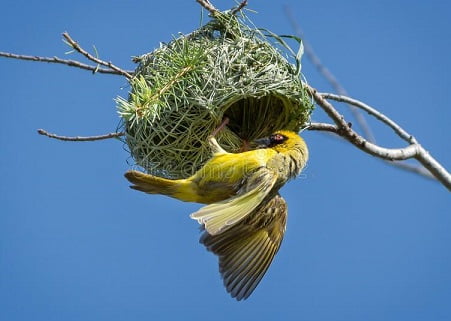We humans are not the only animals that build involuted homes and other structures. The animal kingdom is abundant with talented architects. To ponder over nature is an awesome Innovative learning methods in School. Wow! Innovative learning methods..make it more practical with Practical learning process and From dams to nests to body armor, these master stroke of animal originality will blow your mind- perhaps you will be astounded to know even creatures with very small brains create some pretty amazing structures
Cathedral Termites
The Cathedral termites are prominent for the spectacular structures which they build. The mounds that can tower more than 15 feet (4.6 meters) high and just constructed from mud, chewed wood, and termite saliva and feces, each mound is a self-sustaining termite megalopolis.
Underground, the termite colony can spread out over several acres. Water gets collected as condensation in the cool interior of the mound. Some termites maintain underground fungi gardens that they cultivate with plant matter and use to feed the swarming termite metropolis.
TEXTILE IN THE TREES: Weaver Birds and their Nest

There are over a hundred species of weaver birds, mostly in Africa & Asia, most of which build intricately woven nests. Home-building is done exclusively by males hoping to attract a female. Depending on the species and available building materials, nests may be constructed with plant fibers or twigs. In a pinch, the resourceful weaver bird will also use string or twine. Grasses are often preferred for their pliability and reliable abundance-one nest requires about a thousand strands. The nest begins with a single strand, knotted to a branch with beak and claw. It is really awesome and reveals the creativity of animal nature which make us to relate with Creative learning in schools.
Followed by a technique just like any other weaving pattern-the strands are threaded through others at opposing angles. From the first knot, an entrance is built. The crevice is important. It should be large enough for the birds to enter, but small enough to prevent predators from entering the nest. The best design has a long tube that connects to a chamber, which will favourably serve as the nursery. When the nest is complete, the male will announce an open house by fluttering his wings. A male will often make multiple nests over the course of the mating season. Most weaver males never become parents.
Beavers
Beavers are well-known animal architects. These inventive builders fell trees and gather sticks and mud to construct dams, which create ponds that offer predator protection and easy access to food during the winter. Hey! Exactly..! It reminds me about Innovative learning methods in School. Beaver impoundments are dams built by beavers to provide ponds as protection against predators. Beavers start construction by diverting the stream to lessen the water’s flow pressure. Branches and logs are then fixed into the mud of the stream bed to form a base. Then materials like sticks, bark, rocks, mud, grass, leaves, masses of plants, and anything else available, are used to build the superstructure.
The average beaver dam is about 6 feet (1.8 meters) high and 5 feet (1.5 meters) wide. Sometimes they can be much bigger.
There are several benefits of these superstructures. Dam building can be very beneficial in restoring wetlands. They help in flood control downstream, Improve the biodiversity by providing habitat for many diverse species, and cleaning water both by the breakdown of toxins such as pesticides and the retention of silt by beaver dams. Beaver dams also have a tendency to raise the water table, think why do beavers build dams?
